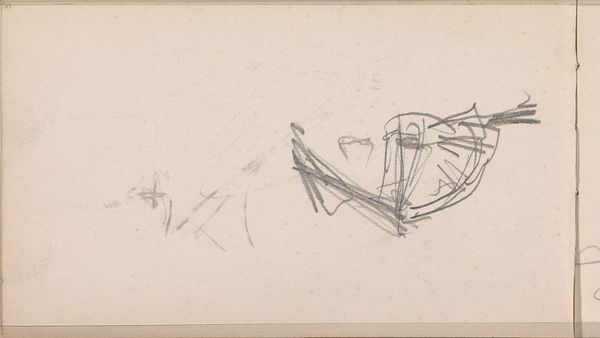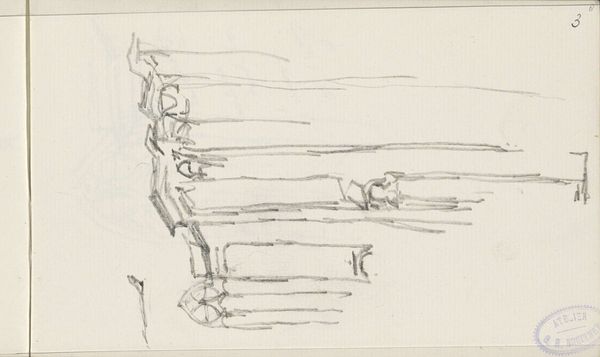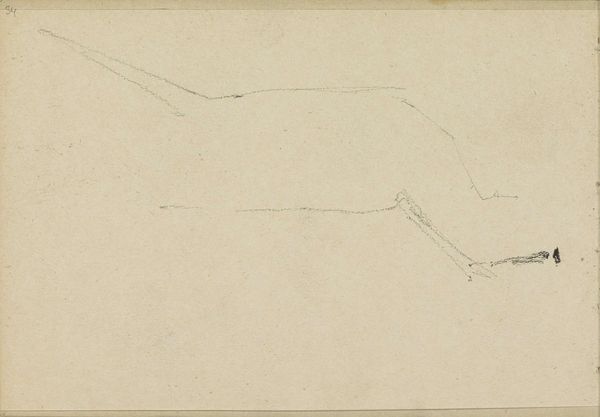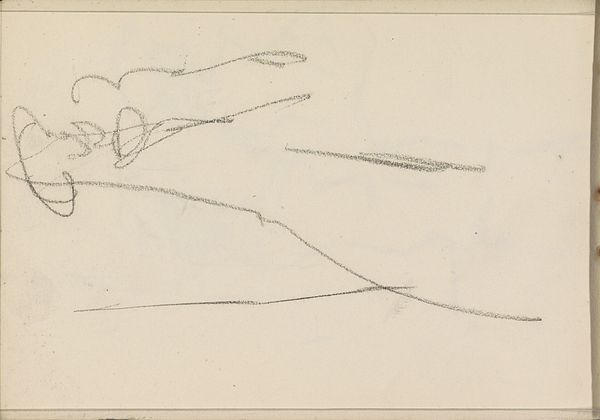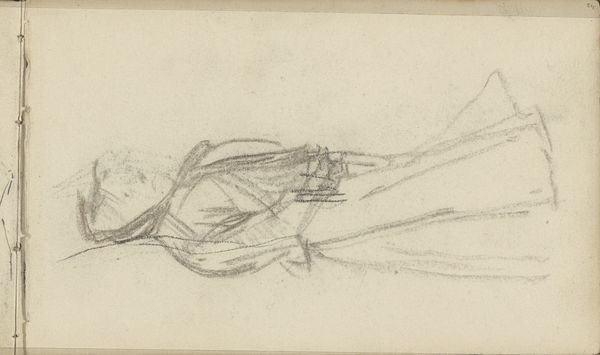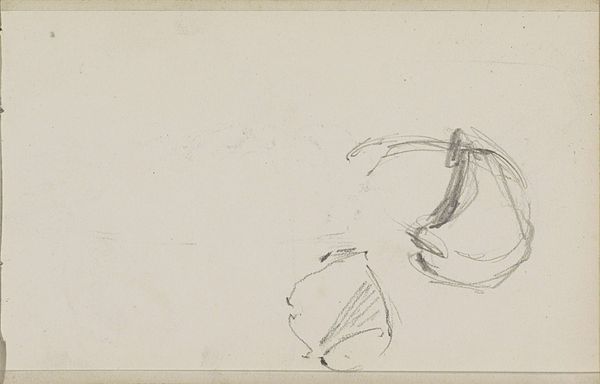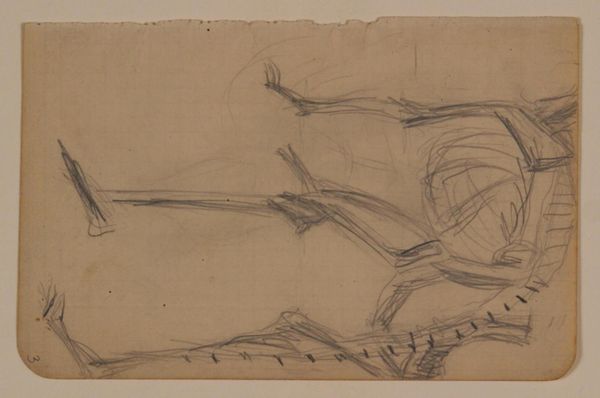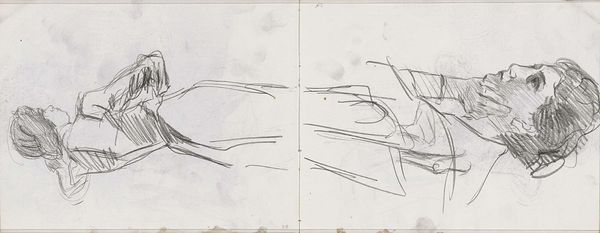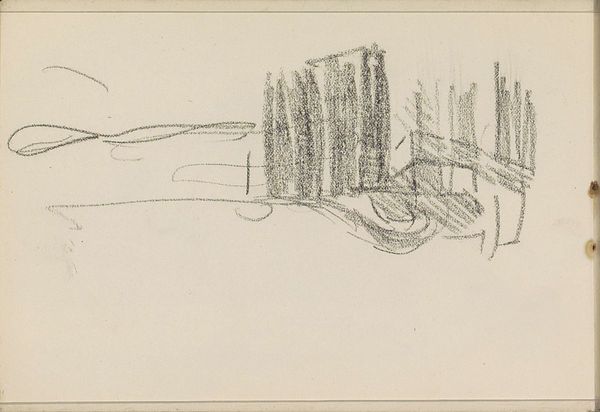
drawing, paper, pencil
#
drawing
#
pencil sketch
#
paper
#
pencil
#
abstraction
#
line
Copyright: Rijks Museum: Open Domain
Editor: We’re looking at “Vrouwenkoppen,” or “Women's Heads,” a pencil drawing on paper from around 1865 to 1913, by Bramine Hubrecht, located here at the Rijksmuseum. It strikes me as very abstract and unresolved. What do you make of the composition? Curator: The interest here, first and foremost, is in the line itself. Notice the varying weights of the pencil strokes, how they create a sense of depth and texture even in the absence of defined forms. Consider the interplay between the horizontal, almost static lines and the more chaotic, scribbled areas. Editor: So, it’s less about the “women’s heads” and more about the qualities of the pencil and paper? Curator: Precisely. We might even consider it a study in mark-making. What sort of space is being produced? How does the use of such a minimal medium amplify the subtle tonal changes achieved by Hubrecht? It teeters intriguingly between representation and pure abstraction, wouldn't you say? Editor: It definitely challenges my expectations. I tend to look for clearly defined subjects, but here, the process seems to be the point. I initially felt underwhelmed, but focusing on the line quality makes me appreciate the drawing's simplicity and its emphasis on the essential elements of art. Curator: Indeed. This is a testament to the power of formal analysis, as it reveals the artistic value, divorced from any narrative meaning. Editor: Thanks! Now I see beyond my initial reaction, and I can better grasp the beauty of artistic processes in minimalist works. Curator: And I'm happy to have further scrutinized Hubrecht’s approach to abstraction.
Comments
No comments
Be the first to comment and join the conversation on the ultimate creative platform.
